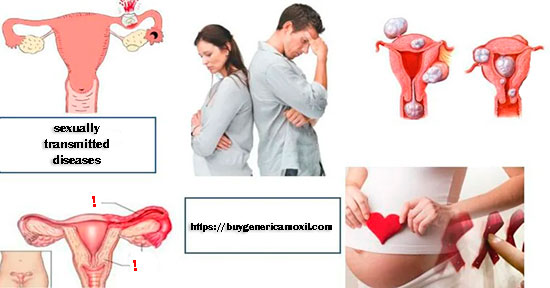Sexually transmitted diseases (STDs), or sexually transmitted infections (STIs) — these terms are understood as infectious diseases, the most common way of infection of which is sexual contact. More than 30 such diseases are known.
Causes of STIs
Infection with infections in most cases occurs in close contact with the carrier of the disease. Most often this happens during sexual intercourse without the use of barrier contraceptives.
The causative agents of infection may be:
- in the saliva of the carrier;
- on the skin (most often near the mouth, in the perianal region, in the perineum);
- in seminal fluid and vaginal secretions.
The development of the disease occurs due to the ingestion of pathogenic microorganisms:
- bacterial agents;
- yeast – like mushrooms;
- viruses;
- the simplest organisms.
They are transmitted from an infected partner, regardless of what type of sexual contact is practiced — oral, anal or vaginal. Some microorganisms are conditionally pathogenic, they constantly live in the human body. They provoke the development of the disease when favorable conditions occur, for example, with a decrease in immunity.
Classification of sexually transmitted diseases
All STDs are divided into several groups:
- Fungal infections. The most “popular” is candidiasis. Infections are mainly affected by those people who often use antibiotics, suffer from reduced immunity and other concomitant pathologies.
- Viral infections. These include HIV, hepatitis B, genital herpes, infectious mollusc and others.
- Bacterial infections. These diseases are also very dangerous for human health and life.
- These include syphilis, gonorrhea, chlamydia, ureaplasmosis and others.
- Parasitic lesions. The most common of these are pubic lice and scabies.
According to the classification proposed by WHO, 22 diseases are divided into 3 groups.
Classic venereal diseases:
- Syphilis.
- Gonorrhea.
- Chancroid.
- Lymphogranulomatosis of the inguinal region.
- Venereal granuloma.
Other sexually transmitted infections:
With a predominant lesion of the genitals:
- Chlamydia.
- Trichomoniasis.
- Candidiasis vulvovaginitis and balanoposthitis.
- Genital herpes.
- Pointed warts.
- Genital infectious mollusc.
- Gardnerellosis vaginitis.
- Urogenital shigellosis of homosexuals.
- Pubic pediculosis.
- Scabies.
With predominant damage to other organs:
- Infection caused by the human immunodeficiency virus (AIDS).
- Hepatitis B.
- Cytomegaly.
- Amoebiasis.
- Giardiasis.
- Sepsis of newborns.
Methods of STD transmission
For sexually transmitted diseases, the following transmission routes are relevant:
- sexual;
- transmissive (parenteral);
- contact and household;
- ascending.
The transmission pathway also determines the entrance gate of infection — the place through which the pathogen enters. For the genital tract, the entrance gates are the genitals, rectum and oral cavity. For contact — damaged skin, oral cavity. For the transmissible pathway – damage to the skin and mucous membranes that have come into contact with blood. Including surgical wounds, teeth, puncture sites. For the ascending path — placenta or damaged tissues and mucous membranes of the oropharynx, eyes, genitals.
Diagnostics sexually transmitted diseases
Bacterioscopic method (smear for infection): The study is performed using a light microscope. The advantages of this analysis are considered to be accessibility, speed and ease. The sensitivity of the study is limited (about 105 bacteria in 1 ml). It is impossible to detect chlamydial and viral infections by this method. It is recommended not to urinate a few hours before taking a smear.
Bacteriological method (bakposev): The study is carried out by growing microbes in a favorable environment. Thanks to this method, it is possible not only to detect the virus, but also to determine its activity. The advantage of this method is the probability of not only identifying the bacterium, but also determining antibiotic resistance. The day before the analysis, it is necessary to refrain from sexual intercourse. Antibacterial therapy should be excluded a week before sowing. Do not empty the bladder for 1.5-2 hours. Do not take a shower during the day, do not use vaginal candles.
Molecular diagnostics: A method for detecting the DNA of a virus or bacterium. Allows you to find an infection at the stage of the incubation period, but it does not give an idea of the activity of the virus. Genital herpes and cytomegalovirus cannot be detected when scraping from the vagina. No preliminary preparation is required.
Serological and immunochemical studies. Mutual FUND
The most important screening method for the diagnosis of urogenital chlamydia. Preparation for the study: for women, it is best to take biological material no earlier than 14 days after menstruation. Before taking the material, patients are advised to refrain from urinating for 1.5–2 hours.
Therapy sexually transmitted diseases
Antibacterial therapy is prescribed taking into account the revealed sensitivity of pathogens. Drugs from different groups are used. For example, it may be amoxil or some other drug.

Immunomodulatory agents: as a result of infectious processes, especially long-term ones, the processes of immune protection are disrupted. The absence of an immune response leads to a prolonged course of the disease, the development of complications.
Enzymatic drugs are used in complex treatment as a means to increase the effectiveness of antibacterial therapy; in addition, they contribute to a faster resolution of inflammatory phenomena.
Multivitamins – in some cases they are prescribed as auxiliary therapeutic drugs.
Prevention
Primary prevention of STDs is carried out before infection. It consists in talking to the population about the existing pathologies, methods of contraception, transmission mechanisms, signs of diseases, as well as their consequences.
Secondary prevention is carried out after infection. It is aimed at working with carriers to prevent transmission to others and to combat complications.
Public, or social, prevention is carried out at the state level, especially among adolescents. It is necessary to teach how to prevent STIs and tell about the actions that should be taken in cases of infection.